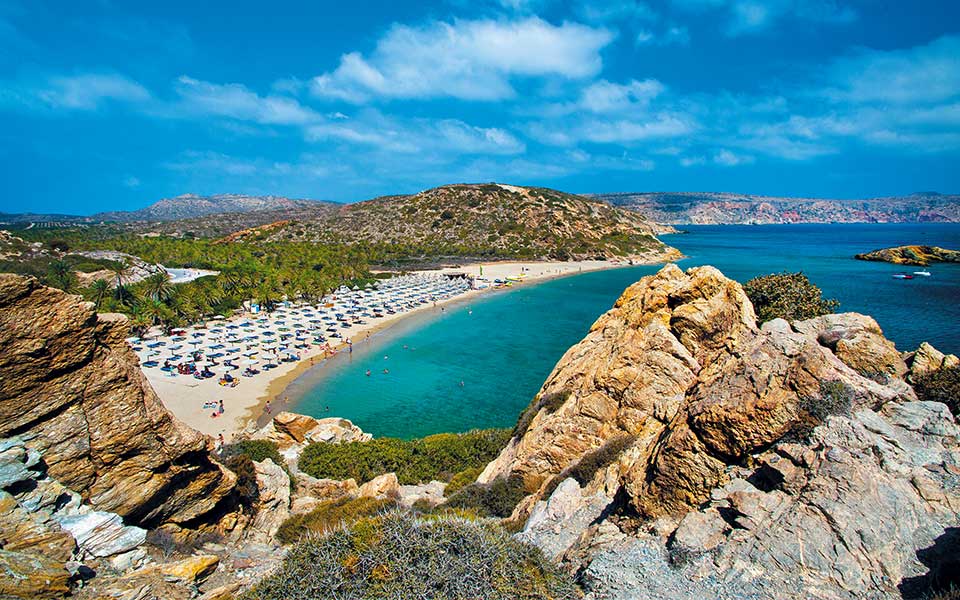The region of Lasithi (Λασίθι) is home to Elounda, where you’ll find the island’s top luxury resorts. Lasithi’s wild beauty, however, is found along roads less traveled, and they lie on its eastern and southern coasts, and in the soaring mountains that stand between these shores.
This “other Lasithi” is a place of rugged nature, abandoned villages, exquisite frescoed churches, ancient monasteries and sacred sites. From the delights of its cosmopolitan capital Aghios Nikolaos to the legendary windmill-strewn Lasithi Plateau, and on through the majestic Dikti and Thrypti mountain ranges, Lasithi is a place of rich natural diversity with fascinating historical sites.
VAI
A Slice of the Tropics
Lasithi meets Thailand at Vai (Greek for “palm frond”), 24km northeast of Sitia. Here, a 2000-year-old forest of palm trees, the largest in Europe with around 5000 trees, provides an exotic backdrop to one of Crete’s most beautiful bays. Legend has it that the forest sprouted from date pits that washed inland after being discarded by Saracen pirates.
With its iridescent turquoise water and waves gently lapping on the soft golden sand, Vai Beach is packed with tour groups in high season. Independent travelers will find it quieter in spring and late summer.

© Stylianos Papardelas
SITIA
On the Waterfront This coastal city averages 300 days of sunshine a year, making it one of Greece’s sunniest spots. The seafront is crowded with tavernas, rakadika (spots serving raki and tapas-like dishes) and cafés.
Good eateries on the promenade include Zorba’s Taverna and the quieter Rakadiko Inodion. Mitsakakis is the pick of the seafront cafés and has great pastries. Order a kafe ellinikos (Greek coffee) in the Café Drosoulites and you’ll pass for a local. Check out artifacts from Neolithic, Minoan and Roman times at the Archaeological Museum of Sitia.
In July and August, the city hosts the Kornaria Festival, featuring musical performances and theatrical shows.
INFO
- Zorba’s Taverna – 3 Kazantzaki, Tel. (+30) 28430.226.89
- Rakadiko Inodion – 157 Eleftheriou Venizelou, Tel. (+30) 28430.261.66
- Mitsakakis – 6 Konstadinou Karamanli
- Café Drosoulites – 91 Eleftheriou Venizelou
- Archaeological Museum of Sitia – Open 08:30-16:00 except Tue, Tel. (+30) 28430.239.17
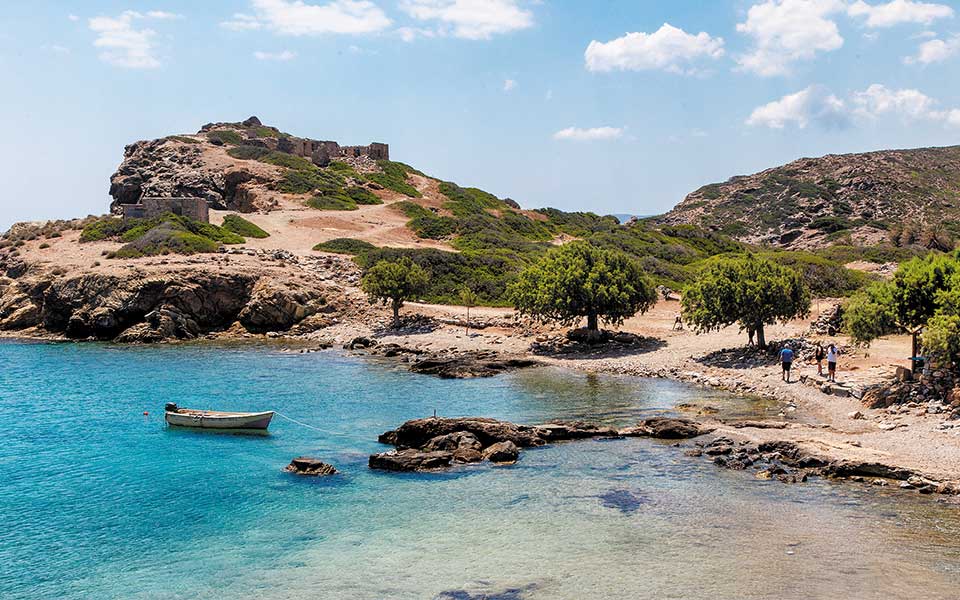
© Stylianos Papardelas
ITANOS
Once Mighty, Now Serene
Just three kilometers from Vai at Itanos, you can have an idyllic beach to yourself, even in peak season. There are no sun loungers, but the pretty coves are shaded by tamarisk trees.
The ancient Minoan site of Itanos, once a prosperous trading post inhabited from 1500 BC, lies inland. Its heyday was in Hellenistic and Greco-Roman times, when it had its own currency and rivaled Ierapytna, (the ancient name of Ierapetra). Ancient Itanos began its decline around 800AD, following an earthquake and attacks from Arab invaders, and was finally abandoned in the 15th century.
There’s a good taverna, Metochi (Tel. (+30) 28430.610.71), on the road to Itanos near the Vai turn-off.
Check out:
Dikteon Cave: The mythical birthplace of Zeus, this cave was an important place of worship for the Minoans.

© Stylianos Papardelas
KOUREMENOS
Wild is the Wind
Heading south, laid-back Kouremenos, with its crescent of golden sand and its reliable “side-shore” breezes, is home to one of Crete’s best windsurfing centers – Gone Surfing (open 10:00-20:00, Tel. (+30) 694.142.7787). It’s also a perfect spot for beginners to learn with the help of certified instructors.
Board rentals (with boards made using the latest carbon technology) start at €30 per hour. A 3-hour one-to-one beginner lesson (including equipment) is €100.
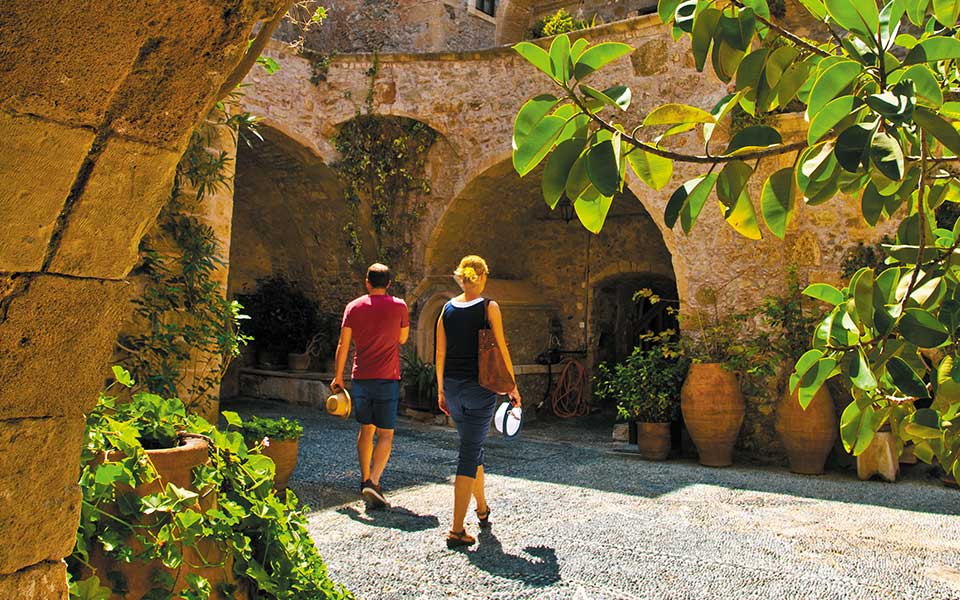
© Clairy Moustafellou
MONI TOPLOU
Behind Stout Walls
Moni Toplou is one of the richest and most historically important monasteries in Greece. From the 15th century onwards, this fortress-like holy refuge was a bastion of Cretan resistance, first against marauding pirates, then against the Ottomans, and once more during WWII, against Crete’s German occupiers. The monastery’s museum has a fascinating collection of engravings and icons.
Admission €3. Open 10:00-17:00.
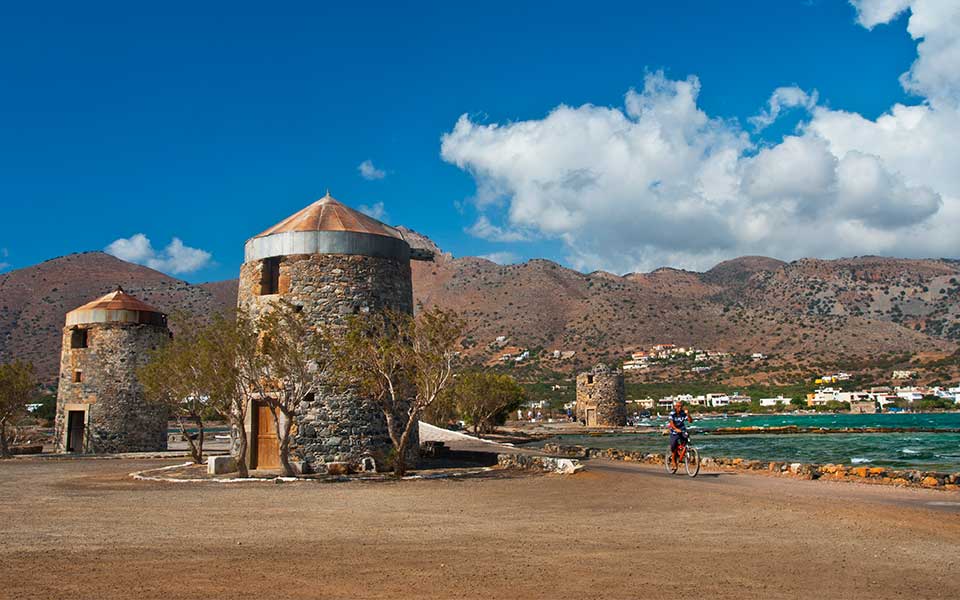
© Clairy Moustafellou
ELOUNDA
A Five-Star Destination
Elounda’s tourism industry dates back to the interwar years, when the British airline Imperial Airways used Elounda as a stopping point for flights to India, but the city really took off as a resort in the 1970s. During the ‘80s and ‘90s, Elounda was a frequent choice for international summit meetings, which gave the city a certain aura of grandeur which remains to this day. The first luxury hotel to open here was Elounda Beach, followed by several luxury resorts, hotels and villas, which extended the city’s boundaries almost up to the shoreline.
If you want to see what all of Elounda was once like, head towards Epano Elounda, a well-maintained settlement that has preserved a traditional atmosphere and which follows its own leisurely pace of life.
Check out:
Elounda: At this famed seaside area, the rich and famous rub shoulders with backpackers enjoying the scenery.
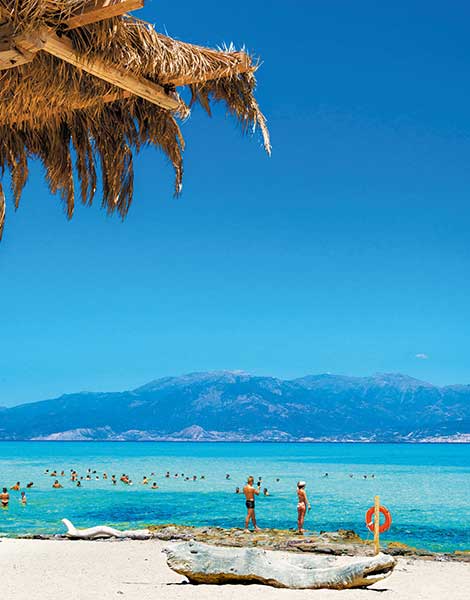
© Visualhellas.gr
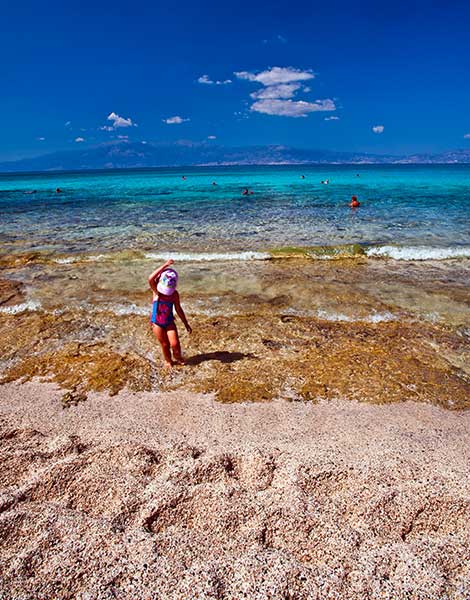
© Stylianos Papardelas
CHRYSI
The Cretan Caribbean
This small island, with its alluring turquoise waters and golden sand, is currently experiencing an unprecedented rise in visitor numbers. You can get to Vouyiou Mati by small caique from Ierapetra, and from there you can walk to the white sand beach at Belegrina, crossing sand dunes dotted with prickly cedar trees.
The shoreline is strewn with millions of tiny seashells, and the beach boasts a refreshment stand as well as beach umbrellas.
INFO
Book tickets or a day trip, including meals, with Cretan Daily Cruises Tel. (+30) 28420.200.08, cretandailycruises.com
Note: The popularity of this unspoiled island boasting sand dunes and prickly cedars is growing. Please handle it with care.
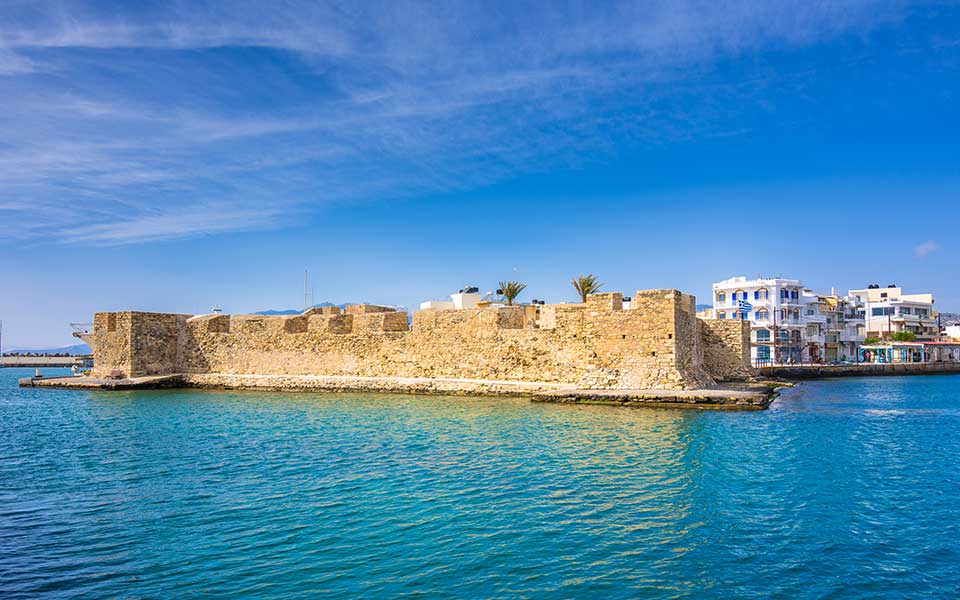
© Shutterstock
IERAPETRA
Napoleon Was Here
This is Crete’s fourth largest city and Europe’s southernmost. The town’s development was spurred on in the 1960s by the development of a modern agricultural industry, when farmers began putting up commercial PVC greenhouses. Today, more than 15 square kilometers of plastic-sheeted greenhouses make it one of the most productive regions for fruit and vegetables in Crete.
Ierapetra’s seafront, from where boats depart for Chrysi Island (see above), is charming. At sunset along the promenade, locals gather to talk at café tables perilously close to the water’s edge. Try the Casablanca Café; this restored 1908 residence with retro detailing and a quiet courtyard is great. Head to Taverna Napoleon for fine traditional Greek and Cretan favorites. The taverna took its name from Ierapetra’s most famous visitor. According to legend, the French emperor stayed here one summer’s night in 1798, on his way to Egypt.
INFO
- Casablanca Café – 5 Lakerda, Tel. (+30) 28425.001.40
- Taverna Napoleon – 26 Stratigou Samouil, Tel. (+30) 28420.224.10
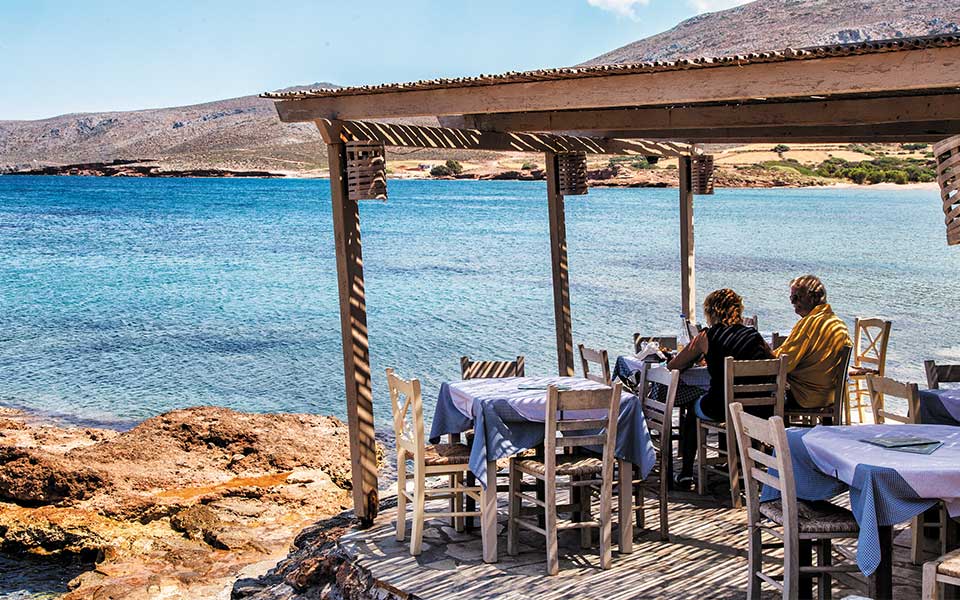
© Stylianos Papardelas
PALEKASTRO
The Perfect Place
Combining a traditional farming economy with a gentle approach to tourism, laid-back Palekastro is the perfect base for exploring Kouremenos, Moni Toplou, Vai and Itanos.
Hiona Psarotaverna (Tel. (+30) 28430.610.14) at nearby Hiona Beach has one of the most beautiful settings of any restaurant in Crete. With a handful of tables on a shaded promontory where the waves break gently around you, it’s a heavenly spot for fresh seafood.
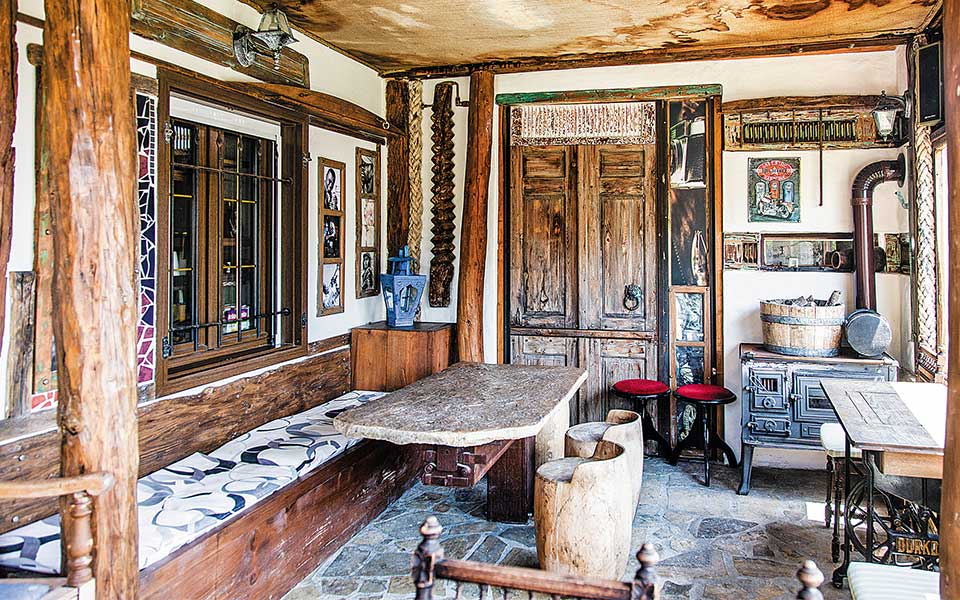
© Stylianos Papardelas
AGHIOS IOANNIS
The Ghost Outpost
The abandoned village of Aghios Ioannis, precariously perched on the southeast edge of the Thrypti Mountain range, is a revelation. Almost every dwelling lies forlorn. Remarkably, one house at the top is the unlikely setting for the music café and wine-bar Fifty Five (Tel. (+30) 697.667.7640). Eccentrically furnished with old typewriters, ancient cameras and an impressive telescope, this establishment is where Ierapetrans with a taste for something different come to chill out.
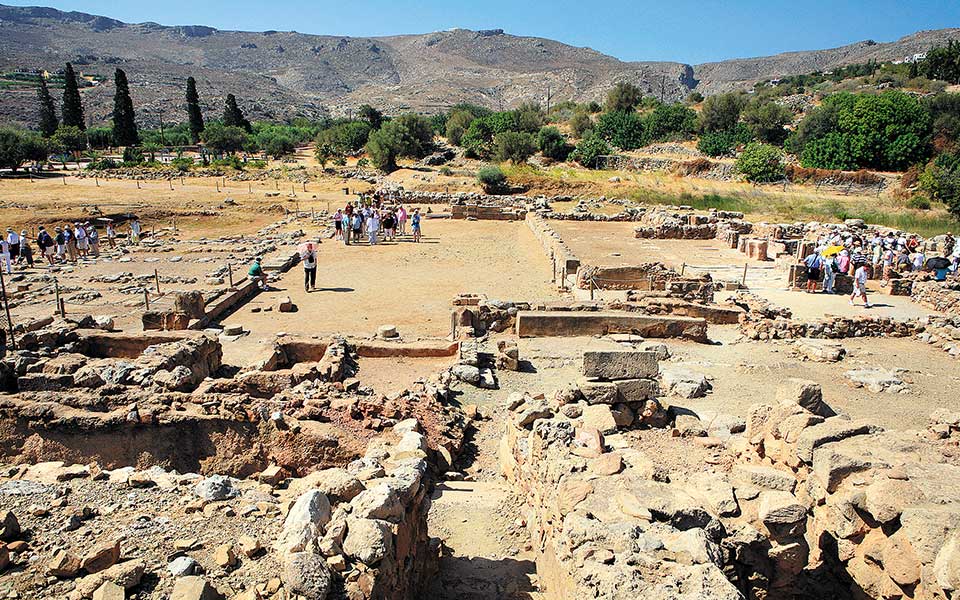
© Visualhellas.gr
ZAKROS AND KATO ZAKROS
High and Low
From Palekastro, the road winds south to the village of Zakros, with its small central square, sleepy tavernas and a cool mountain spring. The village merits a quick look before you head to the coast and the more renowned destination of Kato Zakros.
On the road down, you’ll glimpse the upper section of the Gorge of the Dead, where Minoans from Kato Zakros entombed their dead, believing their departed would rise again in this vast and fertile gorge. Burial caves can still be seen here along the 2-hour walk through the 2.5km gorge.
The seaside hamlet of Kato Zakros is a lovely place to unwind, but its long history is its major selling point. Ancient Zakros was an important Minoan port, trading with Anatolia, Cyprus, and even Syria; its remains cover an 8000 sq.m. site. One of the four great Minoan palaces of Crete, along with Knossos, Malia and Phaistos, it was built around 1600 BC. Admission to the hillside site is €6.
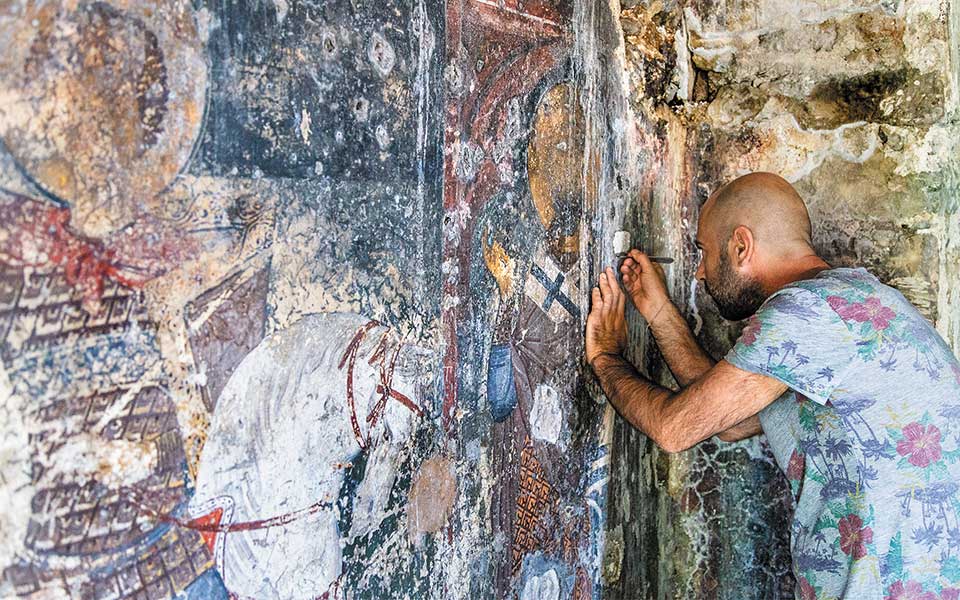
© Stylianos Papardelas
ZIROS
The Past is Present
In the village here, in the tiny Church of Aghios Nikolaos, the images of the saints that were painted in Byzantine times still stare out in shimmering gold and red ochre from the structure’s ancient walls. Here, too, the many-layered nature of Crete’s history is revealed; graffiti, written in Latin, memorializes certain bold Venetian visitors. Scratched into the ancient stone is the date “1492” (the same year Columbus set sail to the Americas) and, alongside it, the words “hic fuat nicollo” (“Nicollo was here”).
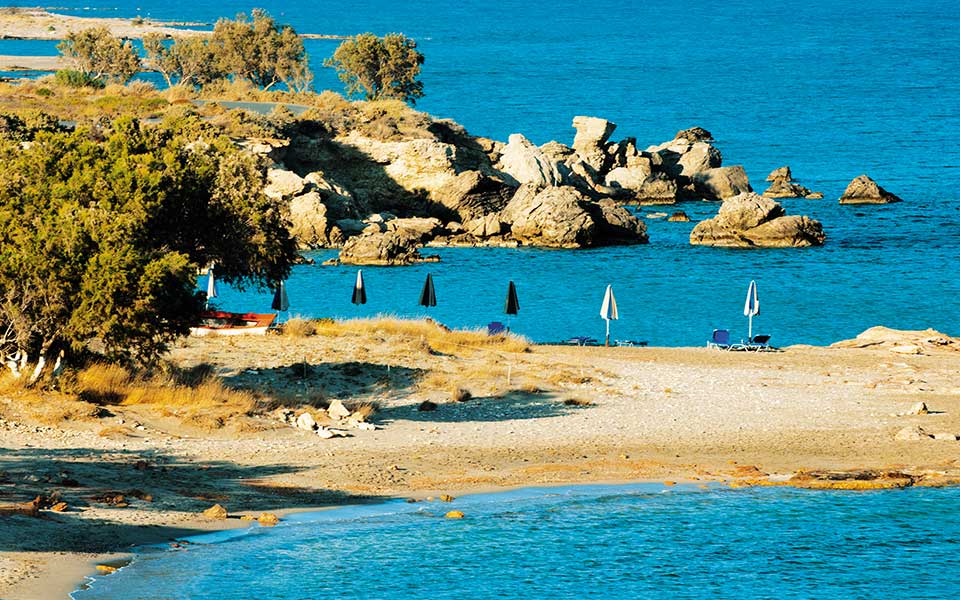
© Visualhellas.gr
XEROKAMBOS
Slow Down
There’s only one road that leads to Xerokambos, and the drive south through rugged hills from Zakros will take less than 20 minutes. Here, the east coast starts to curve, soon to become Lasithi’s southern shore. Isolated and tranquil, Xerokambos is a joy. With two pristine beaches, and a handful of tavernas set back from the sands, this is the Crete of a gentler, quieter time.
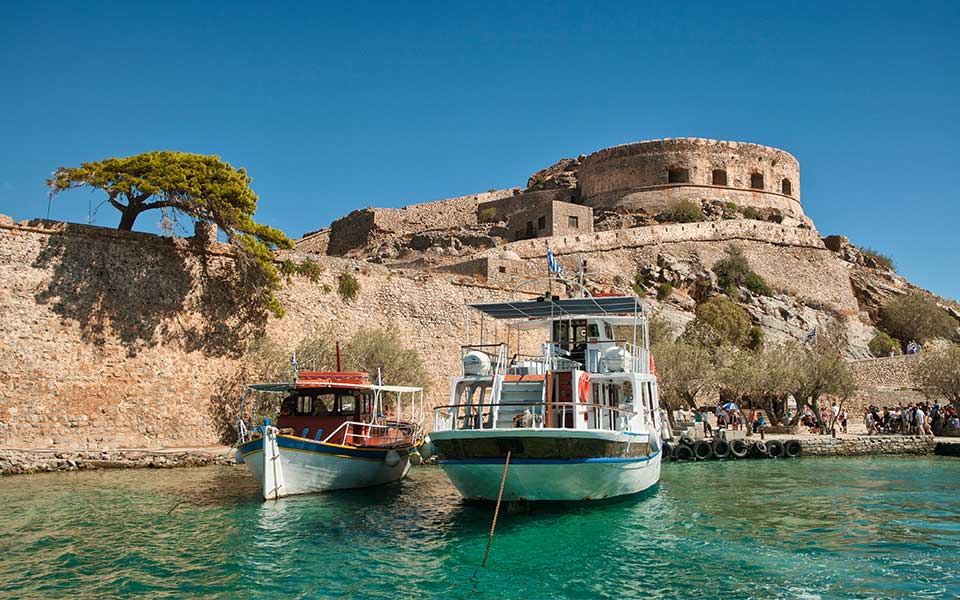
© GNTO Kalaitzian
SPINALONGA
A Best-Selling Island
“The rock of Spinalonga is no longer a military fortress as it used to be in its time of glory, nor a humble Turkish village. With equivocal healthcare interests in mind, the Cretan Government has transformed it into a lepers’ hospital, without any concern for historical memory,” wrote Giuseppe Gerola, an Italian archaeologist, in 1906.
Almost a century later, this chapter in the history of this place – the period it was used as a leper colony – would provide the inspiration for British author Victoria Hislop’s award-winning international bestselling novel “The Island,” which has been translated into more than twenty languages. Today, Spinalonga is the second-most visited site on Crete, after Knossos.
Info
Entry fee to the archaeological site: €8, opening times: 08.00-18.00. Boat fare: €10 from Plaka, €12 from Elounda. Boat service: Tel. (+30) 697.744.6229, (+30) 697.668.3597.
Check out: Victoria Hislop’s novel “The Island,” published in 2005, brought worldwide attention to this former leper colony.

© Stylianos Papardelas

© Stylianos Papardelas
MOHLOS
Lazing by the Sea
There’s really nothing nicer than sitting at the Rocks Café Bar (Tel. (+30) 697.767.5076), on the shore of a tiny bay and in front of a pebbled beach, sipping home-made iced strawberry cordial. There are also a few fish tavernas with octopus hanging on lines in the sun.
In ancient times, this sleepy fishing village (today with rooms and studios for rent) was the site of an important Early Minoan community and was physically connected to the islet across the bay. Today, local swimmers know to beware the strong currents that run in the waters between that islet and the shore.

© Stylianos Papardelas
MONASTIRAKI
Country Cooking
On one of the western slopes of the Thrypti Mountains lies a tiny village near one of Crete’s most beautiful ravines, the Ha Gorge. Here, the Papadakis family have converted their ancestral olive mill into a serene taverna with beautifully appointed rooms – To Monastiraki (Tel. (+30) 697.284.7432). Looking across the plain from the tranquil stone terrace here while savoring delicacies such as omelettes with fresh wild greens or rabbit in a wine sauce is simply heaven.
Check out:
Ha Gorge: One of the most beautiful gorges in Europe, this natural wonder is 1800m long and features 27 separate waterfalls.
KRITSA
At the Source
Just 10km southeast of Aghios Nikolaos in the foothills of the Dikti Mountains, the village of Kritsa is home to a large agricultural collective of families with olive groves in the area, who produce some of Crete’s finest olive oil under the “Kritsa” brand. The Kritsa producers have an almost religious devotion to their product, 70% of which is exported.
A pleasant place for a stop on a stroll through the village is the Kafenio Saridakis, a café under the old plane tree.
Info
Taverna Platanos (Tel. (+30) 28410.512.30), next door to the café, is a favorite.
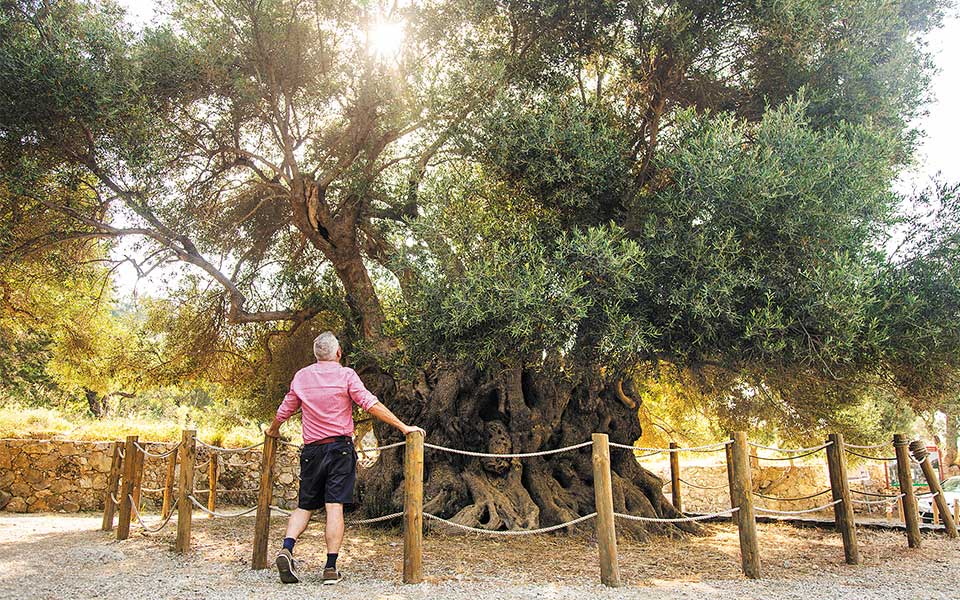
© Stylianos Papardelas
KAVOUSI
Rooted in the far past
Along the road that climbs to Azoria, you’ll find one of Crete’s most ancient olive trees. Believed to have been planted between 1350 and 1100 BC, this now-enormous tree has a trunk circumference of more than 22m at its base. At the 2004 Athens Olympics, Japan’s gold medalist marathoner Naoko Takahashi was presented with a victor’s wreath made from a branch of this ancient tree.
Check out:
Kavousi: The Azoria Olive Tree, whose trunk measures more than 14m in circumference, sprouted sometime between 1350-1100 BC.

